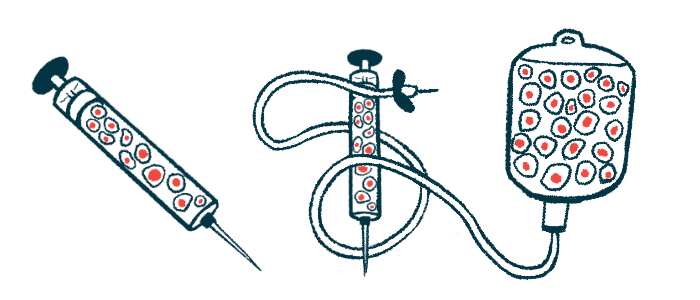Stem cell therapy BEAM-101 dosed to 1st patient in BEACON trial
Clinical data readout expected in second half of 2024

The first patient has been dosed in BEACON, a Phase 1/2 clinical trial of a transplant-based gene-editing stem cell therapy called BEAM-101 that Beam Therapeutics is developing for sickle cell disease (SCD).
After the transplant, stem cells began to “engraft,” meaning they started to grow and give rise to healthy blood cells, indicating that the procedure was successful.
An initial “sentinel” group of three patients in the BEACON trial (NCT05456880) will receive BEAM-101 one after the other to confirm that the transplant is safe. The remaining two patients in this group are expected to be dosed soon.
Enrollment at clinical trial sites across US
While enrollment may be still ongoing across the U.S., the company plans to begin dosing more patients in the first half of this year, with the first clinical data readout expected in the second half of the year.
“Building on this momentum and benefiting from the significant clinical validation, regulatory clarity, and scientific breakthroughs occurring in the broader gene editing field, we expect 2024 to be a year of significant catalysts for Beam,” John Evans, Beam’s CEO, said in a press release.
Beam’s strategy for 2024 and beyond includes a three-wave plan for the development of BEAM-101 that seeks to progressively extend clinical testing to reach a wider range of patients. The company is also developing treatments for diseases other than SCD.
“Our … programs have the potential to provide best-in-class therapies for significant patient populations with high unmet need, while also establishing a platform for sustainable long-term growth across multiple therapeutic areas,” Evans said.
Around birth, there is a switch in the production of hemoglobin — the protein carrying oxygen in red blood cells — from a fetal to an adult form. People with SCD produce hemoglobin S (HbS), a faulty version of hemoglobin that causes red blood cells to take on a sickle-like shape, and become stiff and sticky, leading to SCD symptoms.
BEAM-101 is designed to switch the production of fetal hemoglobin (HbF) back on using a next-generation form of CRISPR, a gene-editing tool. The edits mimic the DNA of people with hereditary persistence of HbF, where HbF production continues into adulthood. This is expected to make up for the faulty HbS and ease SCD symptoms.
Patients who enroll in the BEACON trial will undergo a procedure to collect hematopoietic stem cells (HSCs) — blood cell precursors — from their bone marrow. These HSCs are edited in the lab and then transplanted back into the patients’ bone marrow via a single infusion.
To make room for the edited HSCs, patients will first undergo a conditioning regimen with busulfan, a chemotherapy agent, to eliminate HSCs currently in the bone marrow. Like other conditioning regimens, however, busulfan carries toxic effects.
Beam is exploring Engineered Stem Cell Antibody Paired Evasion (ESCAPE) as an alternative to existing conditioning regimens. This strategy, set to enter Phase 1-enabling preclinical testing this year, is expected to be associated with fewer toxic effects.
The company is also investigating the potential of an editing-based strategy for SCD, where DNA editors would be carried aboard lipid nanoparticles, or “mini” fat particles, and delivered to patients directly via an intravenous infusion. This could eliminate the need for a transplant altogether.








